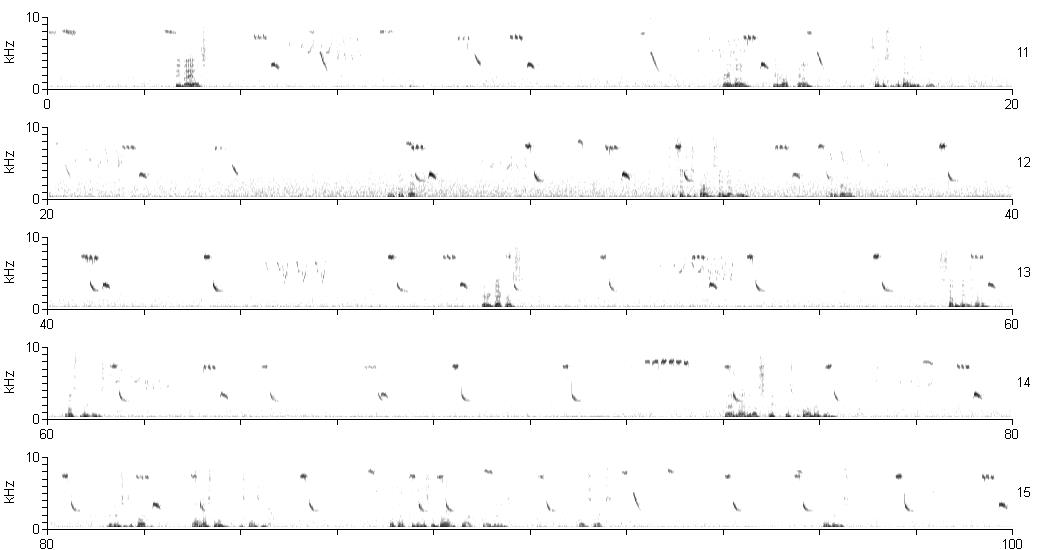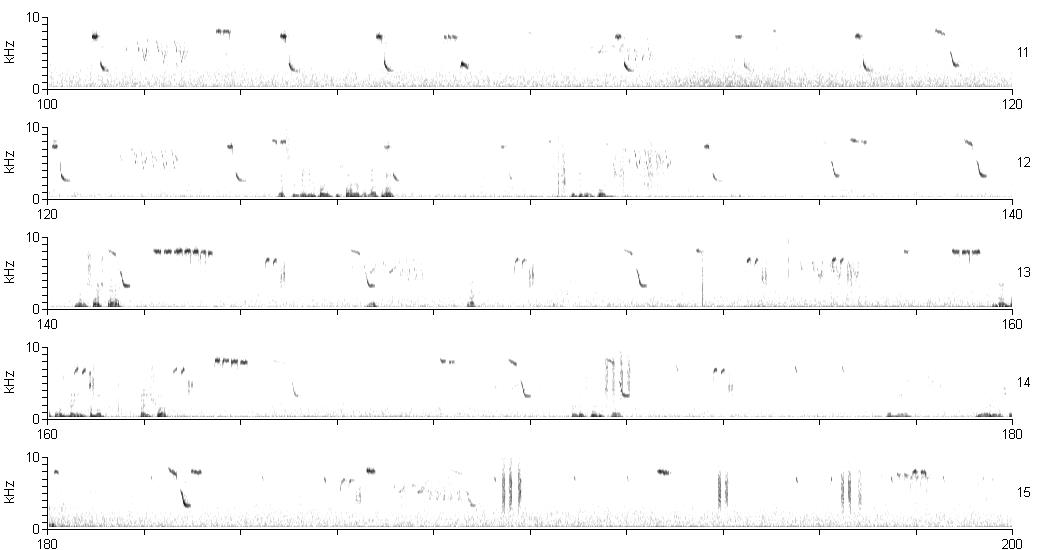
The control above is for the entire 200-second sound. Switch to the sonogram below after 1:40.

The control above is for the entire 200-second sound. Switch to the sonogram below after 1:40.
As far as I could tell, this cut records an extended boundary dispute between two neighbors. The evidence for that conclusion is the form of the vocalizations being used and the plumage of the "combatants." Cheryl Sine decoded the complex repertoire structure of the Green-backed Tit and found that these calls appear to be the equivalent of the gargle calls of North American chickadee species (Genus Poecile). In chickadees, the song is typically used for advertising territory from a distance and gargle is used in physical disputes, as when a territory is invaded.
In Europe, where Great Tits have been studied in detail, the black streak that runs from the black bib down the middle of the chest is much wider and blacker in males than in females. Presumably that holds for other species in their genus (Parus); if so, these two birds were both males, because their "mid-ventral stripes" were wide and jet black against a field of bright yellow. And it is males that defend territories more vigorously, especially in the nesting season when their paternity is always at risk.
The evidence against is simply the impression that they were "together," as mates would be. If not, it was one of the most decorous boundary disputes I've ever seen. Maybe they even have an amicable relationship, like Tim Allen and Wilson Wilson in Home Improvement, although that interpretation is sentimental and contrary to theory. (Actually, our understanding of intrasexual competition in this genus would predict that two wide-striped neighbors have little to fear from each other.)
Yesterday I mentioned that each genus of the Paridae is a little cluster of similar species, each cluster with its own story. The family has two big stories, too, which were uncovered by Jan Ekman and Erik Matthysen more than 30 years ago. One cluster includes the blue tit genus Cyanistes and today's genus (Parus), as well as, probably, the African species and a few more Asian species. The males in this cluster are more brightly colored than females, pairs travel in flocks with other pairs in winter, but do not have rigid social hierarchies, and these birds do not cache and recover food. This cluster is not represented in the New World. The other cluster includes North American chickadees and titmice, as well as Old World crested tits, coal tits, and chickadees. They do cache and recover food, they do form small social groups in winter that have rigid dominance hierarchies, and males and females are very hard for humans to tell apart. The whole lot, though, share an elaborate vocal repertoire structure, which therefore must date back to the origin of the family. Oh, to see that original species. How different the world must have been back then!

Go to the upper sonogram to control the sound.